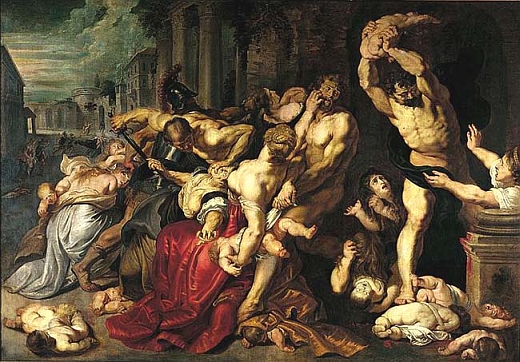It seems that in most households in America where Christmas is celebrated, it occurs on December 25, and the tree is stripped and ready to be hauled off by the garbage men the following weekend. December 26, of course, is the day for the return of unwanted gifts. This marks Christmas celebrated as consumerism; a justification for boosted retail sales.
For centuries before the commercialization of Christmas, however, it was a spiritual holiday that was anticipated for the four preceding Sundays of Advent, and then it was followed by eleven further days, ending on January 6. Each of those days had a specific significance in terms of the liturgical calendar, and popular customs also arose with respect to them, of which the Twelfth Night might be the most significant in the English-speaking world, a day for revels. But alas, none of this could be successfully converted to a rite of consumerism (and anyway, the urge was to get all those accounts settled and sales booked by year’s end), so it all seems to be fading away.

Today, the fourth day of Christmas, is the Feast of the Holy Innocents, or in the older English usage, Childermas. Most Americans only have a vague understanding of what it’s about. King Herod, we learn in Matthew 2:16, ordered that all infant males in Bethlehem be put to death. He was apparently inspired by word of the approach of the three magi, seeking an infant king in that city, and fearful of a plot against his throne. The story does not appear in any other gospel text, nor in any contemporaneous history, which causes many historians to express skepticism about it.
Nevertheless, the commemoration of this horrible act of slaughter was incorporated into the Christmas season, and it evolved a number of traditions. In the Middle Ages it figured in Christmas pageants, especially a famous one in Coventry, surrounded by what may be the most hauntingly beautiful of the English carols—dating to the sixteenth century at least—the Coventry Carol. It also figured in some cruel practices in England—as histories of the Coventry Carol note that this day was one on which children were whipped to remind them to be mournful.
This hardly fits into modern celebrations which focus only on the uplifting notes of the religious tradition, leaving those seemingly more cruel behind. What purpose can be found for this commemoration today? It interjects cruelty and inhumanity at a time which should be marked by peace and festivity. Some modern Christian writers try to transform the incident into a polemic against abortion. But of course, the legend does not speak to the unborn, and this understanding has no historical basis.
I have a different understanding of this story and its function in the Christmas cycle. We think of course of the innocent children. But the actor in this story is King Herod the Great, a figure with a disputed historical legacy, but certainly attached to much cruelty. This story is a reminder of the tendency of those who hold temporal power to engage in corrupt deeds, even horrific crimes, to retain that power. Christ of course made no claim on Herod’s crown, nor did he challenge the rule of the Romans. But in the thinking of the legend of the innocents, even the suggestion of an alternate authority was unbearable to Herod, an unrighteous ruler. The martyrdom of the innocents reminds us of this all too human failing. It reminds us never to repose too much trust and faith in those who hold temporal power, and not to confuse their acts with justice. In the end justice must be understood divorced from the power and ambitions of individual political figures, who being only human will, as Albertus Magnus reminds us, often stray from the path of righteousness.
Otherwise, of course, you can just associate the fourth day of Christmas with four calling birds—which makes much less fuss.


